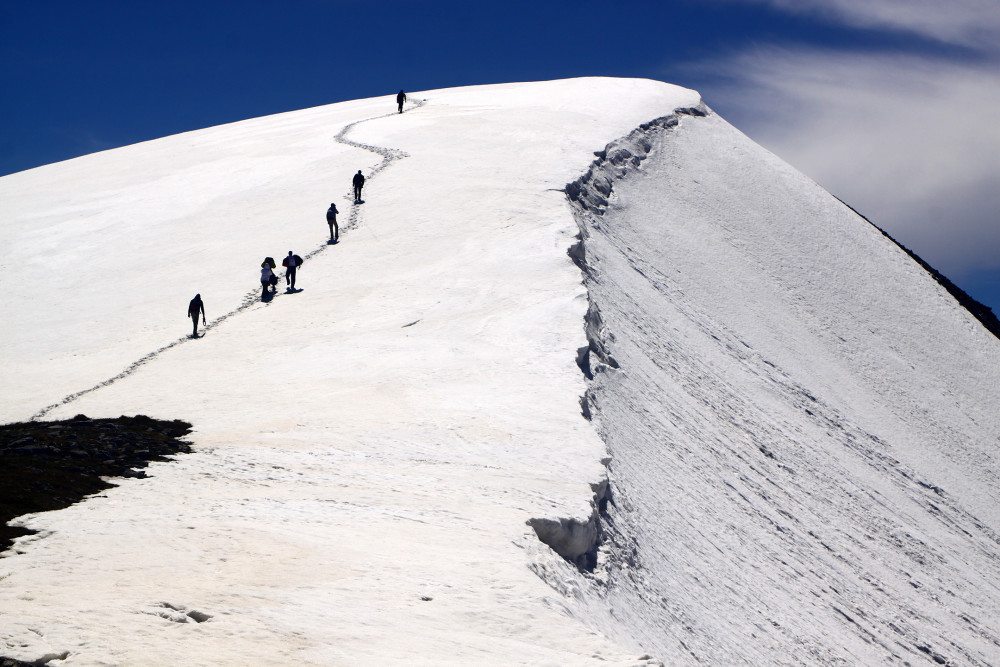For those getting ready to hike this winter, there’s a lot to prepare for; much more so than during the other seasons. Just being a person who is comfortable in the cold or used to the snow isn’t quite enough. There are a lot of things to look out for while being in the outdoors this time of year, and it’s important to know what to do and not do while out on the icy and snowy trails:
On Choosing a Trail:
Don’t: Visit a trail just because it sounds ‘fun’ or it will be a ‘great experience’.
Do: Research a trail just as much as you would research any trail. Consider how long you will be outside and if your body can handle it.
Sure, trudging through glaciers and endless snowfields sure seems like it would be an exciting time, and maybe for a lot of backpackers, it is. However, if you’re one of those people that doesn’t do well in winter conditions, or perhaps you suffer from poor blood circulation, then you might need to spend a lot of extra time choosing a trail that’s right for you. A trail that lets you enjoy being outside, instead of having you wonder constantly when you’ll be back in the warmth again. Remember, there are tons of great places to hike (down south) in the winter months, that aren’t experiencing typical winter conditions.

On Clothing:
Don’t: Think layering up a few hoodies and Under Armour will keep you warm.
Do: Bring a heavy winter coat that’s ideal for hiking, but also keeps you from sweating too much underneath.
Wearing the right clothes during the winter can be very tricky. If you’re like me, then it seems no matter what you do, you’re either too hot or too cold. Especially when you start to get moving, you don’t want to spend your time shedding ten layers of clothing, just to put them all back on as soon as you feel a little cold again. That being said, it’s important to just have three layers; a base layer, a middle layer, and an outer layer. Make sure your coat has a windbreaking material on the outside, which will keep you warm but allow you to move freely.
On Gear:
Don’t: Think that the gear you use during other seasons will hold up during an intense winter hike.
Do: Invest in gear that’s is primarily only used for the winter, that will last in rough conditions, and will keep you warm and safe through it all.
Just because you love your reliable hiking boots, doesn’t mean they’re ideal while hiking in the winter. You should consider having gear solely for these types of hikes, and save the others for more pleasant conditions. Hiking during the winter means you might have to get things like snowshoes, an ice axe, a warm hat, and even a good pair of snow goggles.
On Food:
Don’t: Bring anything that’s going to easily freeze, or meals that are too light.
Do: Bring extra supplies to eat and cook, and make sure you’re prepared for the worst.
The winter is very unpredictable, and you’re going to need a lot of energy to take on what you’re about to do. Additionally, you will need to bring extra fuel and extra food just in case you get stuck in a storm.
On Protecting Your Body:
Don’t: Think that you’re invincible to things just because the sun isn’t as visible.
Do: Take the exact same precautions you would take during the summer.
Don’t forgo the sunscreen, and make sure your skin is protected. The sun is just as strong, especially when it reflects of the white snow or when you’re at higher altitudes. Keep yourself just as hydrated even if you don’t feel dehydrated, and make sure you are aware of any health dangers that can occur in low temperatures, including, but not limited to, hypothermia.
On Navigating the Trails:
Don’t: Just go with the flow, or see what happens when you start hiking.
Do: Look up the weather, the conditions, and sunrise and sunset. Know which areas of the trail to avoid and which to stick to.
The winter is an interesting time of year to hike, and you need to consider certain things you might not consider during the other months. For example, it gets darker much earlier. White-out conditions can occur, making visibility very difficult. Avalanches can and do happen, and you need to know which parts of the trail are more prone to them, or even restricted altogether.

On Safety:
Don’t: Underestimate the power of Mother Nature during the wintertime.
Do: Understand exactly what you’re getting yourself into. Protect yourself while you’re on the trail. Invest in extra gear that will help keep you safe. Consider going hiking with a group of people, instead of by yourself. It doesn’t hurt to read up on a few books or blogs regarding winter hikes, so that you can learn from what others have done (or haven’t done).
Hiking during the winter is an awesome opportunity and you shouldn’t hold back just because it’s a little more scary. Embrace the challenge and own it; just make sure you go about it the right way!








